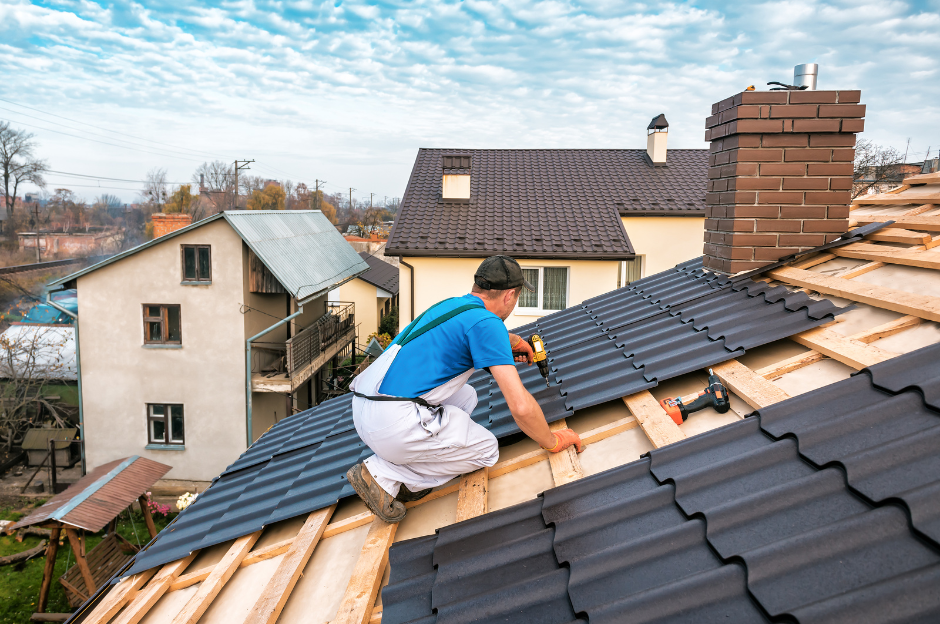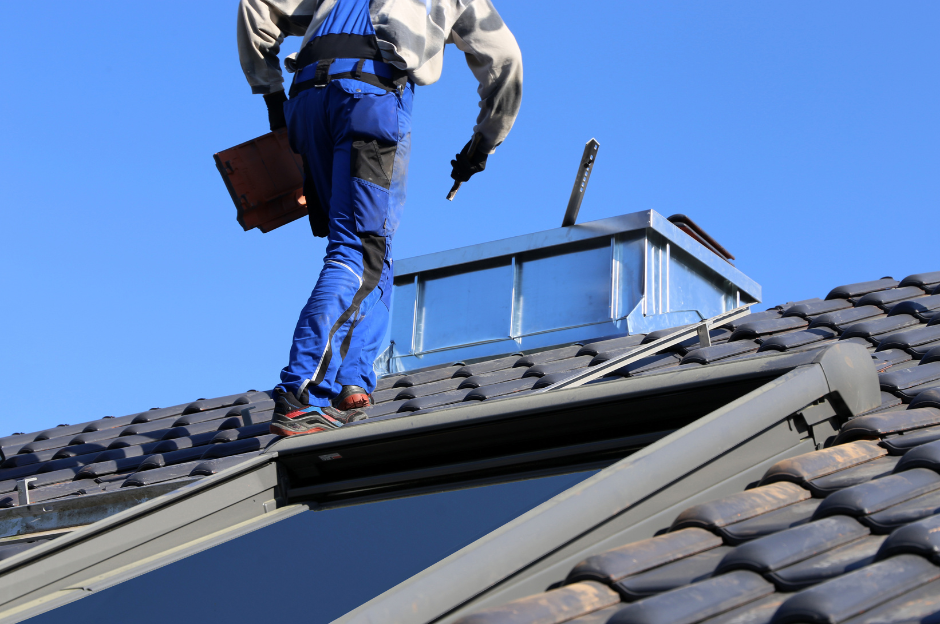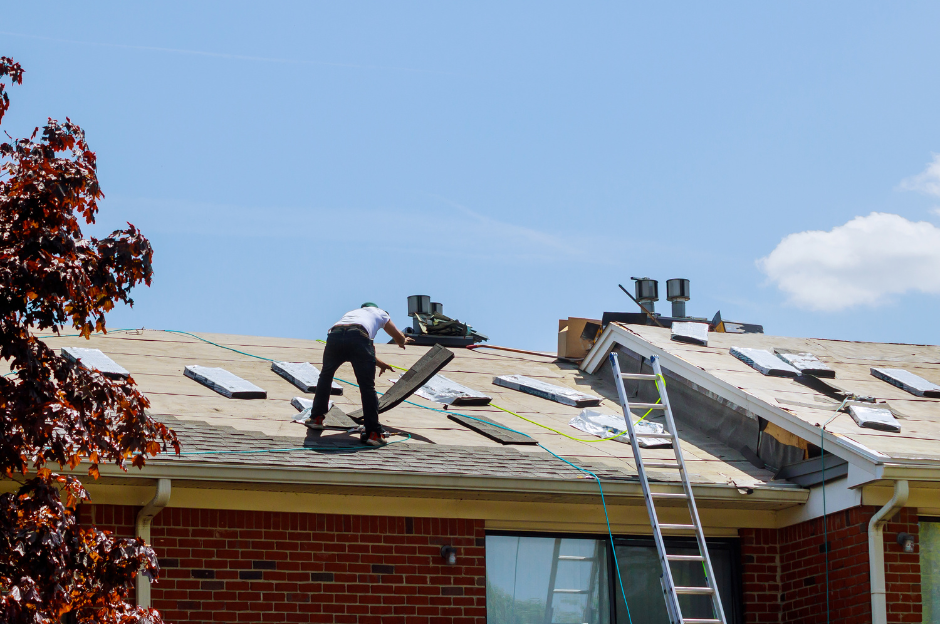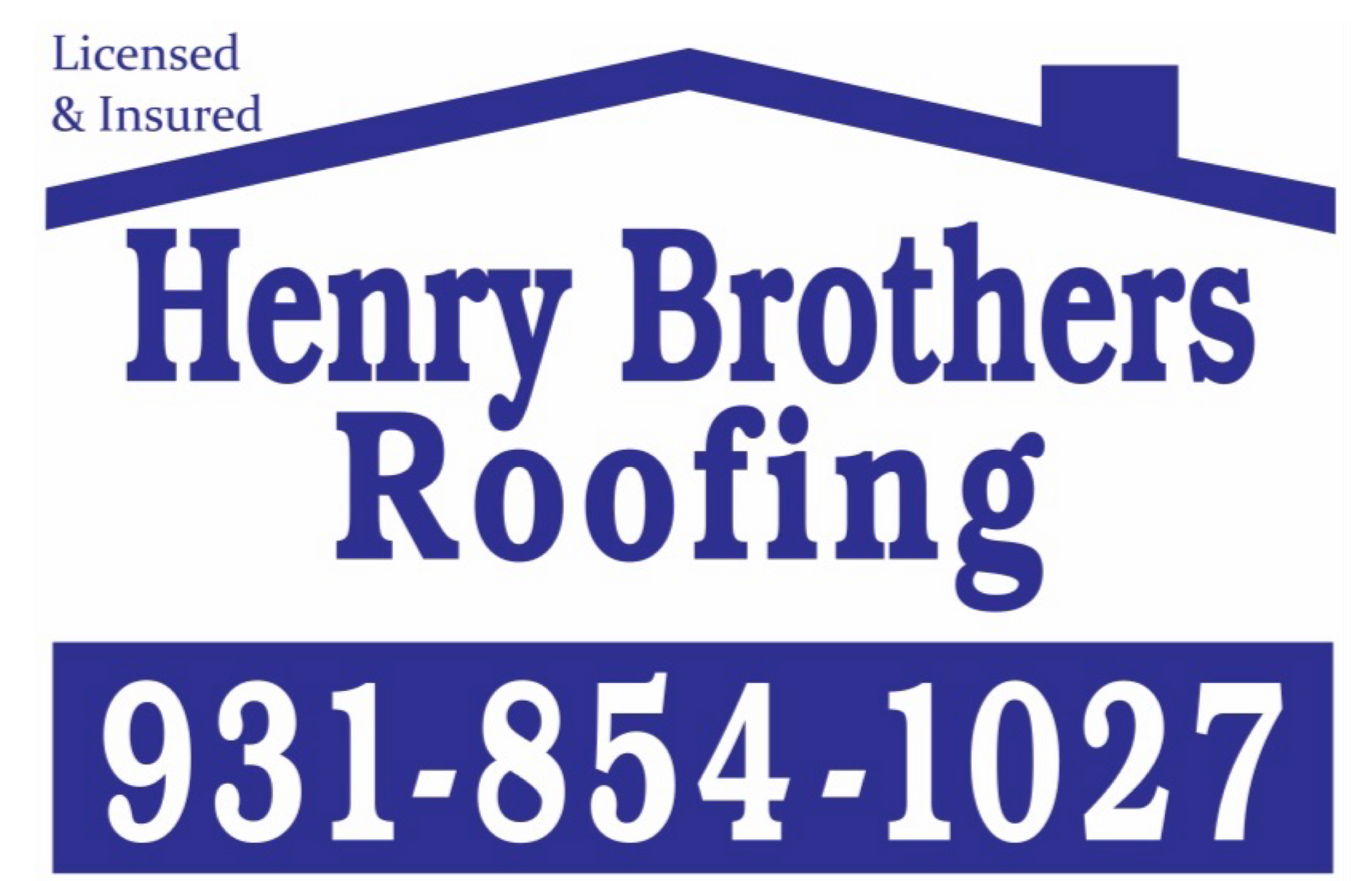Roofing Solutions for Modern Architecture: Merging Form and Function
January 10, 2025

When we think of modern architecture, sleek lines, minimalist design, and innovative materials typically come to mind. In this evolving world of design, roofing solutions have become more than just a means of covering a structure. They are now integral to both the aesthetic and functional elements of contemporary buildings. Modern architects are moving away from traditional roofing materials and designs, exploring innovative solutions that not only serve practical purposes but also enhance the beauty and environmental efficiency of the structures they adorn.
This blog post will explore how roofing solutions have evolved to meet the needs of modern architecture, balancing form and function. From sustainability to aesthetics, we’ll dive into the different types of roofing solutions that are shaping the future of architectural design.
The Role of Roofing in Modern Architecture
Roofing is no longer just a protective layer that keeps the elements out. Today’s roofs play an important role in the overall design of a building, providing shelter, contributing to energy efficiency, and even acting as a living space in some cases. As architects continue to push the boundaries of what’s possible, roofing solutions are becoming more creative and diverse.
A roof is the final element of a structure, often giving the building its finishing touch. The roof's style, materials, and overall shape influence the building’s aesthetic appeal and can significantly impact the perception of the entire structure. Furthermore, the roof must also provide essential protection against the weather, contribute to the building's insulation and energy efficiency, and be durable enough to stand the test of time.
As modern architecture often embraces minimalism, sustainability, and innovation, roofing solutions have evolved to support these trends, incorporating cutting-edge materials and techniques that merge form and function seamlessly.
1. Green Roofs: Sustainable Solutions for Urban Spaces
Green roofs, also known as living roofs, are one of the most popular and environmentally-friendly roofing solutions in modern architecture. A green roof involves planting vegetation on top of a building, creating a natural habitat that benefits the environment. It’s an excellent solution for cities with limited green space, helping to reduce the urban heat island effect and promoting biodiversity in urban areas.
From a functional standpoint, green roofs offer several benefits:
Thermal Insulation: Green roofs naturally regulate temperatures by providing an extra layer of insulation. The plants help keep the building cool in summer and warm in winter, improving energy efficiency and reducing heating and cooling costs.
Stormwater Management: Green roofs absorb and retain rainwater, reducing the amount of runoff and alleviating pressure on urban drainage systems. This makes them especially useful in flood-prone areas.
Improved Air Quality: The plants on a green roof help filter pollutants from the air, contributing to a cleaner and healthier environment.
Aesthetic Value: Green roofs add an organic touch to modern architecture, turning an otherwise utilitarian feature into a beautiful, natural space. They can be designed as gardens or recreational spaces, providing an oasis in the middle of a city.
While green roofs are undoubtedly functional and sustainable, they also add a visually stunning element to modern buildings. Their ability to merge aesthetics with environmental benefits makes them a popular choice for architects focused on both form and function.
2. Solar Roofing: Harnessing the Power of the Sun
As the demand for sustainable architecture grows, solar roofing has become a significant player in the modern roofing landscape. Solar panels have been around for decades, but recent advancements in solar roofing materials have made them more attractive and practical for use in contemporary architecture.
Solar roofs integrate photovoltaic (PV) cells into the roofing material itself, either by incorporating them into traditional roofing materials or by using specialized solar tiles that blend seamlessly with the roof’s design. Tesla’s Solar Roof is a prime example of this innovation, featuring sleek, glass tiles that look like traditional roofing materials but also generate electricity.
The key benefits of solar roofing include:
Energy Efficiency: Solar roofs allow buildings to generate their own electricity, reducing reliance on the grid and cutting energy bills. With the rise of renewable energy, solar roofs are an attractive choice for environmentally-conscious homeowners and businesses.
Long-Term Savings: Although solar roofs come with a higher upfront cost, they can save money in the long run by lowering energy costs and offering tax incentives for installation.
Aesthetic Appeal: Traditional solar panels can sometimes look bulky and out of place on a modern building. However, solar roofing materials are designed to blend in with the architecture, providing a sleek, minimalistic look that doesn’t compromise the aesthetics of the building.
Sustainability: Solar roofing solutions reduce the carbon footprint of a building by harnessing the power of renewable energy, making them an essential component of green architecture.
By merging functionality with eco-friendly design, solar roofing is a perfect example of how modern roofing solutions contribute to both the look and efficiency of a building.
3. Metal Roofing: Sleek, Durable, and Low-Maintenance
Metal roofing has emerged as a top choice for modern architecture due to its sleek appearance, durability, and low maintenance. Whether it’s standing seam metal roofs, corrugated panels, or metal shingles, metal roofing offers a clean, contemporary look that complements modern building designs.
One of the main advantages of metal roofing is its durability. Metal roofs can withstand harsh weather conditions, including high winds, heavy snow, and extreme temperatures. Additionally, metal roofs have a longer lifespan compared to traditional asphalt shingles, often lasting 40-70 years, making them a cost-effective solution over time.
Other benefits include:
Energy Efficiency: Metal roofing reflects the sun’s rays, reducing the heat absorbed by the building and keeping it cooler in hot weather. This can significantly lower cooling costs, especially in regions with hot climates.
Sustainability: Many metal roofing materials are made from recycled content and can be recycled at the end of their lifespan, making them an eco-friendly option.
Aesthetic Flexibility: Metal roofs come in a variety of colors, finishes, and styles, allowing them to blend with different architectural designs. Whether you're designing a sleek modern home, an industrial-style building, or a minimalist structure, metal roofing can provide the perfect complement.
Metal roofing is a prime example of merging form with function. It combines modern design with practical benefits, making it a popular choice for contemporary buildings that require a balance of style and performance.
4. Flat Roofs: A Minimalist Look with Functional Benefits
Flat roofs are a hallmark of modern architecture, offering a clean, minimalist aesthetic that complements contemporary designs. While flat roofs were once associated with utilitarian structures, today they are used in a variety of high-end residential and commercial buildings. With their simple, geometric form, flat roofs allow architects to experiment with innovative designs, adding an extra layer of sophistication to a structure.
Flat roofs are also highly functional in modern architecture:
Extra Space: Flat roofs can serve as additional living or recreational space. Many modern buildings feature rooftop gardens, terraces, or outdoor living rooms, providing an escape from the city while maintaining a sleek, functional roof.
Easy Installation and Maintenance: Flat roofs are typically easier to install and maintain than pitched roofs. Their design simplifies the process, allowing for quicker construction and fewer issues with leaks and maintenance.
Energy Efficiency: Flat roofs can accommodate a variety of energy-efficient technologies, including solar panels, green roofs, and cool roof coatings, making them ideal for sustainable designs.
While flat roofs offer a minimalist and functional design, they also require high-quality materials to ensure water drainage and prevent leaks. The careful selection of materials and design elements can turn a flat roof into an essential part of modern architecture.
5. Cool Roofs: Enhancing Energy Efficiency and Comfort
Cool roofs are designed to reflect more sunlight and absorb less heat than traditional roofing materials, which helps reduce the building’s cooling load and energy consumption. This roofing solution is particularly beneficial for buildings in hot climates, as it keeps the interior of the building cooler and more comfortable.
The advantages of cool roofs include:
Reduced Cooling Costs: By reflecting sunlight, cool roofs reduce the need for air conditioning, helping to lower energy bills and reduce the building’s overall carbon footprint.
Improved Comfort: Cool roofs create a more comfortable living or working environment by reducing the heat island effect, keeping the building cooler and reducing the likelihood of temperature fluctuations.
Sustainability: Cool roofs contribute to environmental sustainability by reducing the urban heat island effect, where cities experience higher temperatures due to the concentration of heat-absorbing materials.
Incorporating cool roofing materials into modern architecture is an excellent way to merge aesthetic appeal with energy efficiency, making it a functional and eco-friendly choice for contemporary buildings.
Henry Brothers Blog

Multi-family buildings pose unique challenges for roofing—requiring durable, efficient, and cost-effective solutions that serve multiple households simultaneously. Selecting the right system and partner can significantly impact long-term maintenance and energy bills. Common Roofing Challenges in Multi-Family Properties Large surface areas Multiple penetrations (vents, HVAC units) Noise and disruption during installation High foot traffic for maintenance Energy efficiency Efficient Roofing Materials TPO (Thermoplastic Polyolefin): Lightweight, reflective, and energy-efficient. Ideal for flat or low-slope roofs. Modified Bitumen: Offers durability and weather resistance. Works well for larger structures. Metal Roofing: Long-lasting and low-maintenance. Higher upfront costs but excellent ROI. Asphalt Shingles: Budget-friendly and easy to repair. Better for pitched multi-family homes. Affordability Strategies Bulk Purchasing Discounts: Roofers often offer lower rates for large-scale projects. Energy Rebates and Tax Credits: Cool roofing materials may qualify for incentives. Roof Coatings: Extend lifespan and defer full replacements. Preventive Maintenance Plans: Regular inspections reduce major repair costs. Partnering with the Right Contractor Choose a roofing contractor experienced in multi-family dwellings. Look for: References from similar projects Warranty offerings Insurance and licensing Clear timelines and communication protocols

Your roof is one of the most defining features of your home’s architecture. A well-designed roof complements the style, era, and character of your house, enhancing both curb appeal and value. Whether you own a modern home, a Victorian masterpiece, or a Mediterranean villa, choosing the right roofing materials and design is essential. This article explores custom roofing solutions for different architectural styles, ensuring your roof is both aesthetic and functional. 1. Why Custom Roofing Matters A one-size-fits-all approach doesn’t work for roofing. Here's why customization is key: 🏡 Preserves Architectural Integrity The roof should match the home's era and design. A poorly chosen roof can clash with the architecture and reduce property value. 💰 Boosts Home Value & Curb Appeal A well-matched roof enhances visual appeal, making your home stand out. Homebuyers prefer houses with roofs that fit the overall design. 🌦 Enhances Durability & Efficiency Custom roofing accounts for climate, slope, and insulation. Choosing the right materials ensures longer roof life and energy efficiency. 2. Best Roofing Materials for Different Architectural Styles 🏗 Modern & Contemporary Homes Modern architecture focuses on clean lines, minimalism, and energy efficiency. Best Roofing Options: ✅ Flat Roofs – Achieve a sleek, contemporary look. ✅ Metal Roofing – Durable and complements modern aesthetics. ✅ Green Roofs – Eco-friendly and visually striking. ✅ Solar Panels – Integrate renewable energy solutions. 🏰 Victorian & Gothic Revival Homes These homes have steep-pitched roofs, turrets, and elaborate detailing. Best Roofing Options: ✅ Slate Tiles – Classic, long-lasting, and historically accurate. ✅ Wood Shingles – Adds charm and natural beauty. ✅ Decorative Metal Accents – Enhances ornate Victorian designs. 🏝 Mediterranean & Spanish-Style Homes Inspired by European coastal homes, these feature stucco walls and curved archways. Best Roofing Options: ✅ Clay or Terracotta Tiles – Traditional, weather-resistant, and elegant. ✅ Concrete Tiles – Durable and available in various textures and colors. ✅ Synthetic Spanish Tiles – Modern, lightweight alternatives with classic appeal. 🌲 Rustic & Cabin-Style Homes These homes emphasize natural materials and a cozy aesthetic. Best Roofing Options: ✅ Wood Shakes – Blends seamlessly with wooded surroundings. ✅ Metal Roofing (Rustic Finish) – Durable with a weathered, natural look. ✅ Green Roofs – Enhances sustainability and insulation. 🏡 Colonial & Traditional Homes These timeless homes focus on symmetry and classic proportions. Best Roofing Options: ✅ Asphalt Shingles – Affordable and available in classic shades. ✅ Slate Roofing – Elegant and historically accurate. ✅ Copper or Metal Accents – Enhances historic charm. 🏛 Mid-Century Modern Homes This style features low-sloped roofs, large windows, and open spaces. Best Roofing Options: ✅ Flat or Low-Slope Roofs – Clean, minimalistic aesthetic. ✅ Rubber or Membrane Roofing – Ideal for low-pitch roofs. ✅ Green or Living Roofs – Complements eco-conscious designs. 🏰 Tudor-Style Homes Tudor homes have steeply pitched gables and decorative half-timbering. Best Roofing Options: ✅ Wood or Synthetic Shake Shingles – Traditional and authentic. ✅ Slate Roofing – Enhances historic charm and durability. ✅ Architectural Asphalt Shingles – Mimics wood or slate at a lower cost. 3. Custom Roofing Features to Consider Beyond materials, adding customized elements can elevate your roof’s design. 🔹 Roof Color & Texture Dark roofs enhance historic and formal homes. Light-colored roofs reflect heat, ideal for warm climates. Textured materials (slate, shakes) add visual depth. 🏠 Roof Shape & Pitch Steep roofs fit Gothic and Victorian styles. Flat or low-sloped roofs match modern homes. Custom pitches enhance energy efficiency and durability. 🔆 Skylights & Roof Windows Adds natural light and enhances ventilation. Works well in modern, contemporary, and rustic homes. 🌞 Solar Roofing & Smart Technology Solar shingles blend seamlessly into modern & eco-friendly homes. Smart roofing systems adjust ventilation & insulation automatically. 4. Custom Roofing: How to Get Started 1️⃣ Consult a Roofing Expert Work with an architect or contractor specializing in custom roofs. Ensure they understand historical accuracy and climate considerations. 2️⃣ Choose High-Quality Materials Invest in durability, energy efficiency, and aesthetics. Select roofing that aligns with your home’s style and longevity needs. 3️⃣ Consider Long-Term Costs & ROI Some materials have higher upfront costs but last longer and increase home value. Energy-efficient options can reduce heating and cooling expenses. 4️⃣ Verify Local Building Codes Some roofing styles require special permits. Ensure compliance with HOA guidelines and historical district regulations.


